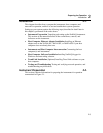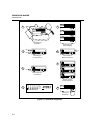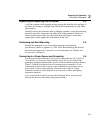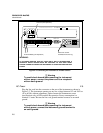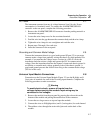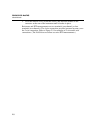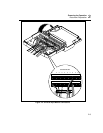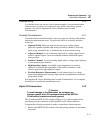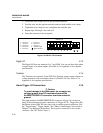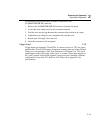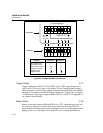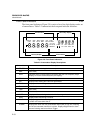
Preparing for Operation
Instrument Preparation
2
2-11
Shielded Wiring 2-10.
Use shielded wires and sensors (such as thermocouples) in environments where
electrical noise is present, and connect the wire shield to the chassis ground
terminal. Also refer to Appendix B "Noise, Shielding and Crosstalk
Considerations."
Crosstalk Considerations 2-11.
Crosstalk between measurement lines causes one signal to interfere with another,
introducing measurement errors. To reduce the effects of crosstalk, check the
following:
• Separate Wiring Keep any input wiring carrying ac voltage signals
physically separate from the input wiring of sensitive channels. Also keep
input wiring separated from, or shielded from, ac power mains wiring.
• Adjacent Channels Avoid connecting input with ac voltage signals next to
sensitive channel inputs. Leave unconnected channels between the inputs
when possible.
• Sensitive Channels Avoid connecting inputs with ac voltage signals adjacent
to four-terminal input channels.
• High Impedance Inputs Avoid high-source impedances on sensitive
channels, or minimize the capacitance of the sensitive channel to earth
(chassis) ground for high impedance inputs.
• Precision Resistance Measurements Avoid connecting any ac voltage
inputs when making peak-accuracy high resistance measurements (resistance
greater than 10 kΩ).
See Appendix B "Noise, Shielding and Crosstalk Considerations" for a complete
discussion of crosstalk and measurement errors.
Digital I/O Connections 2-12.
PCaution
To avoid damage to the instrument, do not apply any
voltages greater than 30V maximum between the DIGITAL
I/O connector terminals and earth ground.
The 10-terminal DIGITAL I/O connector (Figure 2-5) on the rear panel of the
instrument provides connection to the Digital I/O and Totalizer functions.
Complete the following procedure to make a connection to these functions:
1. Remove the DIGITAL I/O connector from the packing material or instrument
rear panel.



